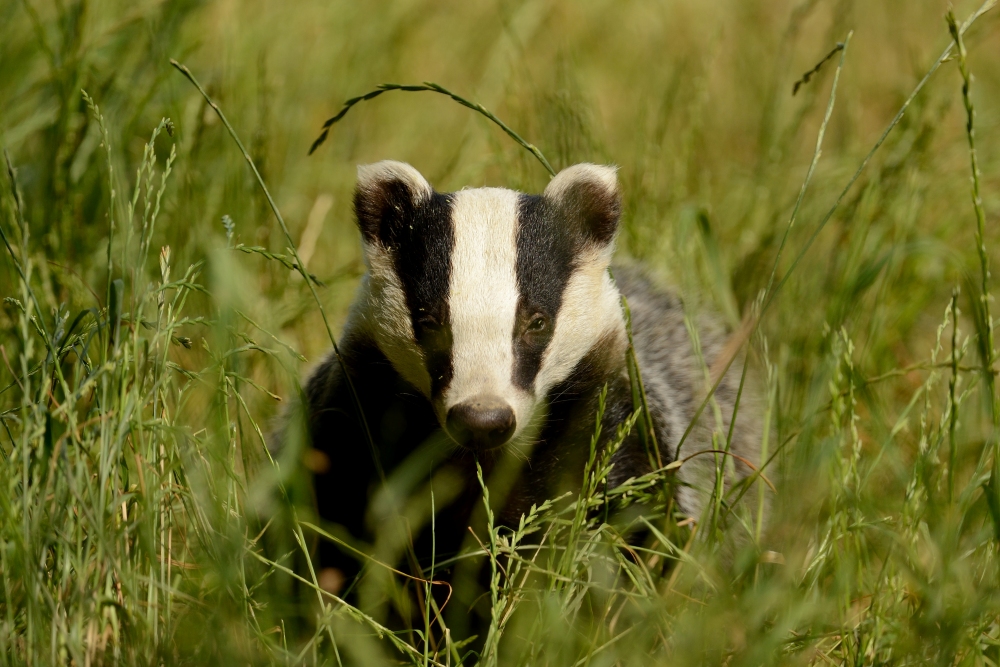European badger

Status
Native, common and widespread
Population
562,000
Scientific name
Meles meles
Badgers are instantly recognisable: two black stripes run the length of their white face, acting, perhaps, as a signal to warn off predators. They have short, powerful legs and strong claws, making them exceptional diggers. They excavate extensive burrows, called setts, made up of tunnels and chambers, sometimes at several levels, that are shared by up to two dozen adults, together with cubs. In Britain, badgers live in larger groups than those in continental Europe and display a greater range of social behaviours, centred around the setts in the group’s home range.
Badgers are crepuscular and nocturnal, emerging around dusk to forage and to groom themselves and other members of the group. Smell is the most important means of communication, identifying individuals and marking out group ranges. In winter, they are much less active and, like other mustelids, their body temperature may fall slightly, but they do not properly hibernate and emerge to forage in mild weather.
Head-body length: 65 – 80cm (males are larger than females on average)
Tail length: 12 – 17cm
Weight: 8 – 12kg (occasionally up to 18kg)
Lifespan: Up to 16 years, but typically 7 – 8 years
Reproduction
Mating peaks in spring but development of embryos is delayed until winter and most litters are born in February. Usually only one female in a group will reproduce successfully, producing 1 – 3 cubs (and up to five on rare occasions). They emerge above ground for the first time at about eight weeks but suckling may continue for 4 – 5 months. Unlike other social carnivores, cubs are not the centre of attention for other group members and have to take care to integrate themselves with resident adults.
Diet
Mainly earthworms but also large insects, cereals, fruit and occasionally small animals, such as hedgehogs and rodents. They will raid bees’ nests for honey.
Habitat
Most commonly a mix of deciduous woodland, open pasture and fields but also urban gardens and embankments.
Predators
Few natural predators in the UK but cubs are sometimes killed by dogs, foxes and other badgers.
Threats
Road traffic accidents and illegal persecution. Disease (gut parasites) can be a major risk to cubs in their first year.
Conservation status
GB Red List: Least Concern (LC). Badgers and their setts are fully protected in the UK under The Protection of Badgers Act 1992.
Population size and distribution
GB population: 562,000. The population has steadily recovered since protection was first introduced in the 1970s. Badgers are widely distributed throughout Britain and Ireland but are scarcer in Scotland. They are absent from most offshore islands except Anglesey, Arran, Canvey, Wight, Sheppey and Skye.
Did you know?
Setts can extend over hundreds of square metres and have many large entrances. The spoil heaps outside setts, in contrast to those at fox earths, contain grass and other plant material, used as bedding.
